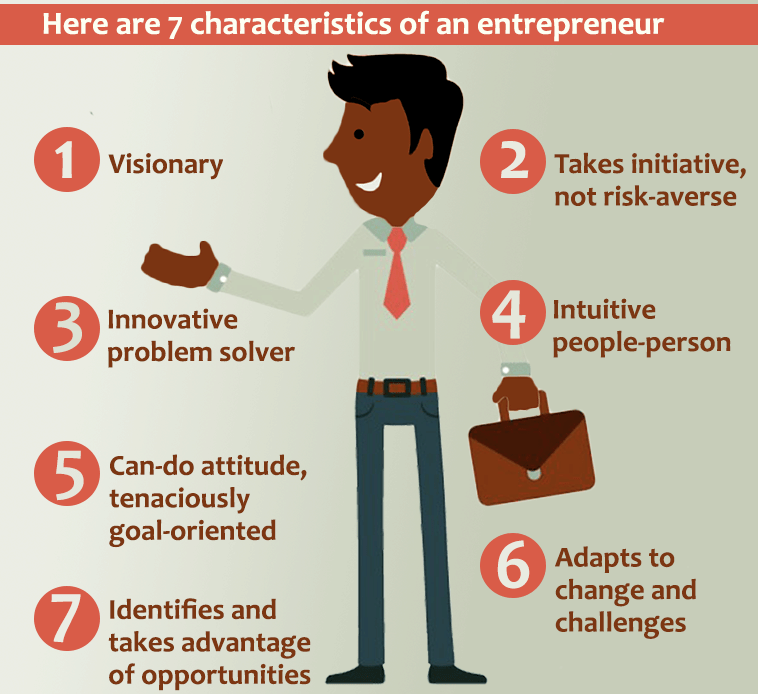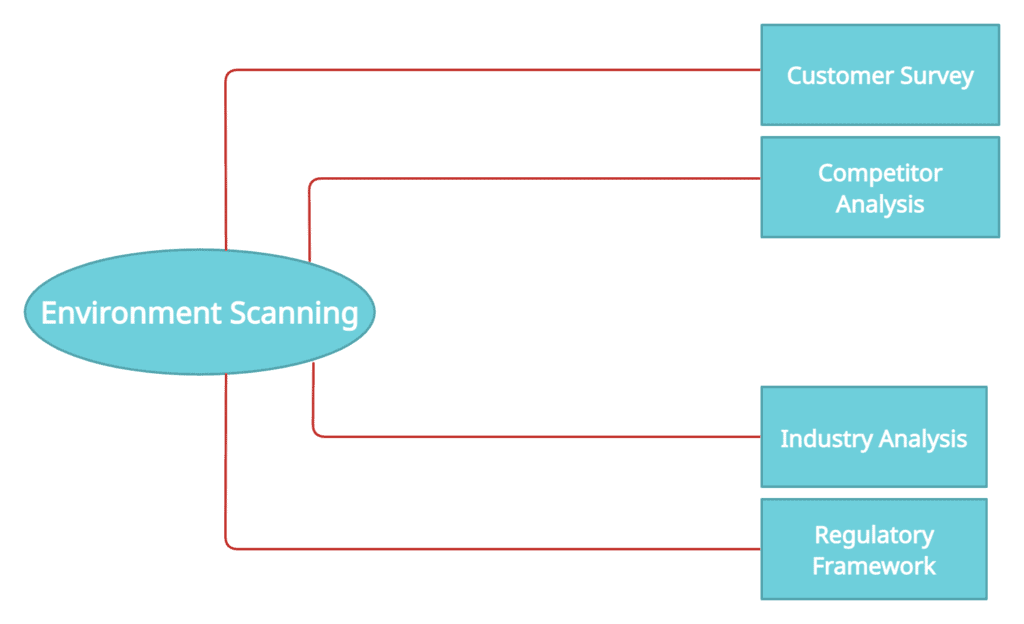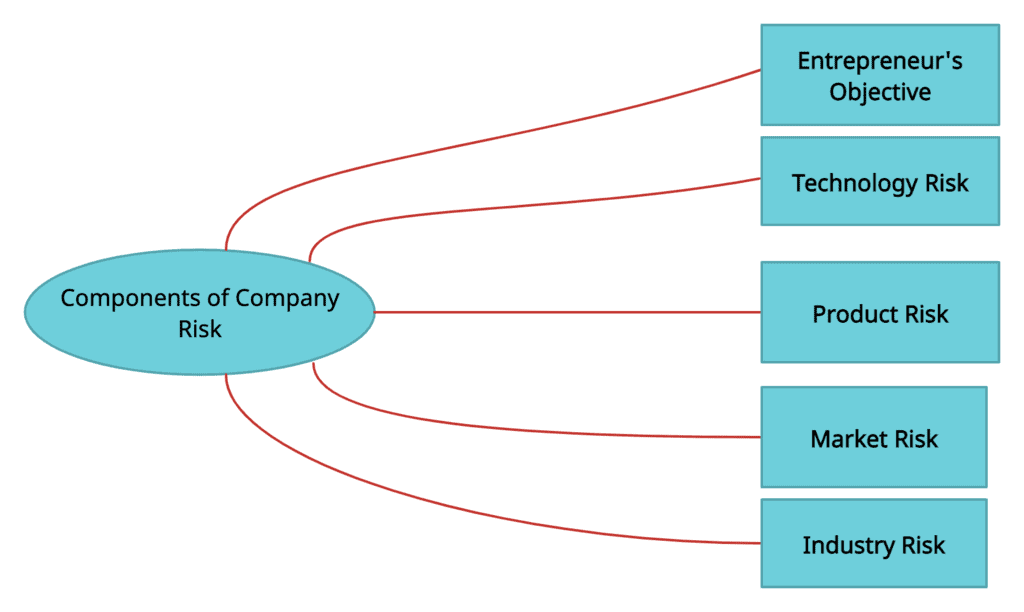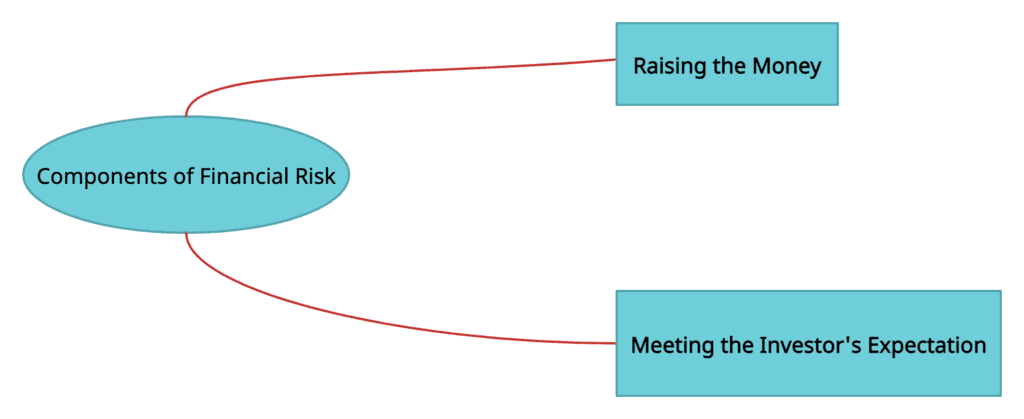Entrepreneurship & Entrepreneurial Opportunities: Notes | Entrepreneurship Class 12 - Commerce PDF Download
Who are Entrepreneurs?
Entrepreneurs are the people who have the ability to see and evaluate business opportunities. They gather the necessary resources to take advantage of them and initiate appropriate action to ensure success.
The journey of entrepreneurship starts with identifying business opportunities. In this chapter, we will understand the process of identifying business opportunities.

What is the Concept of Entrepreneurship?
Entrepreneurship is the skill and willingness to create, organise, and manage a business, while handling its uncertainties to make a profit. Peter F. Drucker described an entrepreneur as someone who is always looking for opportunities. A successful entrepreneur is someone who identifies business opportunities in their environment and takes steps to produce and sell goods and services to maximise that opportunity.
- In economics, entrepreneurship related to land, labour, natural resources, and capital can lead to profit.
- They are visionaries, able to influence others such as customers, partners, employees, and suppliers to recognise, share, and support these opportunities.
What Constitutes a Business Opportunity?
A business opportunity is an economic idea that can be turned into a business and generate profit. Before choosing an opportunity, the entrepreneur must confirm two things:
- There is a strong market for the products they plan to produce.
- The investment's return rate is appealing enough to be accepted.
Types of Entrepreneurship
It is classified into the following types:
- Small Business Entrepreneurship:
These businesses are hairdressers, grocery stores, travel agents, consultants, carpenters, plumbers, electricians, etc. These people run or own their own businesses and hire family members or local employees. For them, the profit would be able to feed their family and not make 100 million business or take over an industry. They fund their business by taking small business loans or loans from friends and family. - Scalable Startup Entrepreneurship:
This start-up entrepreneur starts a business knowing that their vision can change the world. They attract investors who think and encourage people who think out of the box. The research focuses on a scalable business and experimental models, so, they hire the best and the brightest employees. They require more venture capital to fuel and back their project or business. - Large Company Entrepreneurship:
These huge companies have defined life-cycle. Most of these companies grow and sustain by offering new and innovative products that revolve around their main products. The change in technology, customer preferences, new competition, etc., build pressure on large companies to create an innovative product and sell it to a new set of customers in the new market. To cope with the rapid technological changes, the existing organisations either buy innovation enterprises or attempt to construct the product internally. - Social Entrepreneurship:
This type of entrepreneurship focuses on producing products and services that resolve social needs and problems. Their only motto and goal is to work for society and not make any profits.
Characteristics of Entrepreneurship
Not all entrepreneurs are successful; there are definite characteristics that make entrepreneurship successful.
A few of them are mentioned below:
- Ability to take a risk: Starting any new venture involves a considerable amount of failure risk. Therefore, an entrepreneur needs to be courageous and able to evaluate and take risks, which is an essential part of being an entrepreneur.
- Innovation: It should be highly innovative to generate new ideas, start a company and earn profits out of it. Change can be the launching of a new product that is new to the market or a process that does the same thing but more efficiently and economically.
- Visionary and Leadership quality: To be successful, the entrepreneur should have a clear vision of his new venture. However, to turn the idea into reality, a lot of resources and employees are required. Here, leadership quality is paramount because leaders impart and guide their employees towards the right path of success.
- Open-Minded: In a business, every circumstance can be an opportunity and used for the benefit of a company. For example, Paytm recognised the gravity of demonetization and acknowledged the need for online transactions would be more, so it utilised the situation and expanded massively during this time.
- Flexible: An entrepreneur should be flexible and open to change according to the situation. To be on the top, a businessperson should be equipped to embrace change in a product and service, as and when needed.
- Know your Product: A company owner should know the product offerings and also be aware of the latest trend in the market. It is essential to know if the available product or service meets the demands of the current market, or whether it is time to tweak it a little. Being able to be accountable and then alter as needed is a vital part of entrepreneurship.
Importance of Entrepreneurship
- Creation of Employment: Entrepreneurship leads to a variety of job opportunities at different skill levels, significantly boosting employment in society. This includes roles for both beginners and those needing specialised skills, strengthening the job market.
- Innovation: It serves as a centre for innovation, introducing not only new products but also improved processes and services that enhance productivity. This results in better quality goods and services, raising the living standards.
- Impact on Society and Community Development:. strong and varied job base enhances society. Entrepreneurship drives important societal changes, such as increased spending on education, improved sanitation, reduced slum areas, and higher homeownership, contributing to a more stable and quality community life.
- Increase Standard of Living: By generating wealth and boosting economic activity, entrepreneurship raises the standard of living, which refers to the growth in the consumption of various goods and services by households over time.
- Supports Research and Development: Entrepreneurs often partner with research institutions and universities to encourage innovation, which is essential for economic growth. New products and services need careful research and testing before hitting the market, promoting development in the economy.
- Development of New Industries: Entrepreneurship is crucial for creating new industries and sectors, leading to further economic diversity and resilience. This aspect is important in understanding the overall significance of entrepreneurship in promoting economic progress.
What is Sensing Entrepreneurial Opportunities?
The base of sensing entrepreneurial opportunities is to generate ideas for new business. There are many sources for new business opportunities for individuals.
These opportunities may be derived from the following thought process:
- If there is a problem in the market, and you have the means to fix that problem, it could lead to a promising business idea.
- Seeing a product or service available in one market that isn’t in your area might inspire you to import it and start a local business.
- Listening to customers is a major source of innovative business ideas. We should continuously pay attention to what customers need, where they want it, how they prefer it when they need it, and the price they are willing to pay.
- Franchises can also provide ideas. You can either buy the rights to a franchise or collaborate with someone who has a business concept but isn’t interested in pursuing it.
Ideas often stem from unmet needs in the market and from shifts in social, legal, or technological contexts. A business opportunity can be seen as an economic idea that can be transformed into a profitable enterprise.
To recognise an entrepreneurial opportunity, one must employ sharp skills in observing, analysing, and synthesising information. The key factors involved in this process include:
- The ability to identify and develop basic ideas that can be commercialised.
- The capacity to gather information from various sources.
- A strong vision and creativity.
Sensing entrepreneurial opportunities is essentially about turning an idea into a viable opportunity and then into a business. Often, spotting an idea is the first step in this process. The following are various sources that can lead to the emergence of fundamental ideas:
- Problems: Identifying a problem can spark ideas for solutions, which can turn into business opportunities.
- Change: Changes in social, legal, or technological aspects can create new business possibilities.
- Inventions: New products or services can lead to fresh business opportunities.
- Competition: Rivalry can inspire the development of new and improved ideas.
- Innovation: Creating valuable new products or processes can enhance existing offerings.
Entrepreneurs are skilled at spotting opportunities, synthesising available information, and identifying patterns that others may overlook. They are visionary individuals who can inspire customers, partners, employees, and suppliers to recognise and support these opportunities.
What is Environment Scanning?
Environmental scanning is the process of gathering information about events and their relationships within an organization's internal and external environments. The basic purpose of environmental scanning is to help management determine the future direction of the organization.
Once an idea is generated for starting a business, the next step is to conduct environmental scanning to further analyze the idea. The following steps are involved in the environmental scanning:

- Customer Survey: The very first step in environment scanning is to conduct a customer survey. This survey should answer some of the basic questions like who is my customer. What does the customer want to buy? When does the customer want to buy? What price is the customer willing to pay? In a nutshell, it should be analyzed whether a real market exists for the proposed product or services or not.
- Competitor Analysis: It should be figured out who else is in the market, and what are they doing for the customers. Are they supplying a similar substitute product or service as you have in mind? That is the second thing you have to establish, and by doing that, you can understand better what need is not met at the moment. That will also give you the opportunity to zero in on the price points and feature points of where you can differentiate yourself from existing players in the market.
- Industry Analysis: You also need to conduct a broader industry analysis to understand the attractiveness of the industry you're going to enter. Is the industry growing or shrinking? What power do the suppliers have in this industry? How many buyers are there? Are there substitute products? Are there any barriers to entry? If so, what are they? That is very important for you to understand, because it will help you realize whether the industry you're thinking of entering is attractive.
- Regulatory Framework: In addition, you may want to look at regulations that affect that industry. Are there any regulations that you would be subject to? This especially applies in the life sciences sector, where there are strict regulations that control the supply of products into the market. In India, the FPO, the Food Processing Organization, is a significant regulator.
The environment analysis establishes the facts as to what kind of product or service or combination of products or services is worth launching in the market. It provides a fair amount of visibility to the risks and opportunities available in the market and how an entrepreneur can manage them as he starts his new business.
Problem Identification
Another important step in the process of sensing entrepreneurial opportunities is problem identification or risk identification in the opportunity that exists in the market. There are mainly two categories of risks namely company risk and financial risk.
The following are the components of company risk:

- Entrepreneur's Objective: The biggest sources of risk are the entrepreneurs themselves. Do they have the will not just to start the company, but also grow the company? Experience has shown that the prevalence of individuals such as Bill Gates or Michael Dell, Narayan Murthy, Azim Premji, Dhirubhai Ambani, and Steve Jobs, who cannot only start companies but also manage their growth—the prevalence of such entrepreneurs is relatively limited.
- Technology Risk: A second source of risk is technology risk. To the extent that your company employs technology, there are obviously issues of, how long will this technology be the leading edge.
- Product Risk: There exists the product risk. If you haven't developed a product yet, can you manufacture it? Will it work?
- Market Risk: Another source of company risk is the market for the product. You need to be aware of two big uncertainties. First, what is the customer's willingness to buy? And second, what is the pace, if you're successful, at which competitors will be able to imitate you? One of the things you have to think about when you enter that market is how you can create barriers to imitation so that if you're successful, the competition won't be able to imitate you very quickly.
- Industry Risk: There are risks associated with the industry. Are there any factors in that industry that relate to the availability of supply? In some cases, you need to have certain raw materials that are in limited supply, and some suppliers might be able to take advantage of that. Barriers to entry might change. Regulations might change and adversely or positively affect your business.
The following are the components of financial risk:

- Entrepreneur's Objective: The primary sources of risk come from the entrepreneurs themselves. It is crucial that they have the determination not only to start the business but also to ensure its growth. Although successful entrepreneurs are remarkable, the document does not indicate how many there are. The need for skilled entrepreneurs is vital.
- Technology Risk: Another significant risk is related to technology. As your company uses technology, there are concerns about how long this technology will remain at the forefront.
- Product Risk: Product risk pertains to whether you can create and manufacture a product if it hasn’t been developed yet. Will it function as intended?
- Market Risk: Market risk involves uncertainties regarding customer demand and the speed at which competitors can copy your success. When entering a market, it’s important to consider how to establish barriers to imitation, ensuring that competitors cannot easily replicate your achievements.
- Industry Risk: There are risks inherent to the industry itself. Are there any supply-related issues? Some industries may rely on specific raw materials that are scarce, and suppliers could exploit this. Changes in barriers to entry or regulations may also impact your business positively or negatively.
The following are the components of financial risk:
- Raising the Money: Can you secure funding at the start? What will your valuation be? Will you be able to obtain additional funding later? The business proposal must be compelling to attract banks and financial institutions.
- Meeting the Investor's Expectations: It’s essential to meet investors’ expectations for reasonable returns to ensure future funding for expansion is accessible.
What is Spotting Trends?
Another important step for sensing entrepreneurial opportunity is to spot the trend of the product or service in the market.
The process of spotting trend is largely related to market demography like the age profile of the consumers and how quickly they change their preferences for a product or service.
The entrepreneur has to ensure that the consumer needs and trend of following a product should be constantly monitored and it should be adequately met to stay in the business.
This can be seen in the auto industry where gear lock for cars was manufactured to provide safety to auto users against theft. Similarly, central locking systems, theft alarm etc., are provided as a safety feature in the cars.
What is Creativity and Innovation?
The process of sensing entrepreneurship opportunity does not end with product and risk identification. Creativity and innovation are two important components in this process.
Generally, the terms "creativity" and "innovation" are used interchangeably and the two words are thought to be the same in meaning and context.
- However, there is a difference in these two terms. Even before we try to understand these two terms we need to keep in mind that an idea is the starting point of creativity and innovation. Without ideas, there cannot be any creativity or innovation.
- The word "creativity" is derived from the word "create". This means that creativity is to create something new out of its existing form or make something new altogether. It is not to create something out of nothing which only god can do. When an entrepreneur combines, changes or replies an existing idea to create a new idea having a value proposition it is called creativity. The quality of ideas may vary from brilliant and astonishing ideas to simple good and practical ideas. Nevertheless, having a mindset to evolve various ideas is the cornerstone of entrepreneurship.
- Innovation is the next step of creativity. Once an idea is created and has worked reasonably well then an entrepreneur adds something new to the existing product or process so that it works better or fulfills different needs. An example of innovation would laptop which was created out of the original idea of a desktop computer.
- The hallmark of a successful entrepreneur lies in the way he or she applies thought processes to continuously evolve the product or service through new and innovative ideas. Some of the greatest ideas have not come on their own but there was some brain behind the thought. We can think of Bill Gates who came up with the Microsoft Windows Operating System, Graham Bell who came up with the Telephone, the Wright Brothers who came up with the aeroplane etc. An entrepreneur should undertake the path of creating value by putting together a unique package of resources to exploit an opportunity.
Selecting the Right Opportunity
- The last step in the process of sensing entrepreneurship opportunity is to select the right opportunity. In the previous steps, the entrepreneur has done an analysis of each and every idea available in terms of risk factors, market and customer response, environment scanning etc.
- Now, he should decide which idea in terms of product or service is best suited to him. He should be able to evaluate these on the basis cost cost-benefit analysis where he will get maximum return at a given cost.
- There are other factors also which play an important role in selecting the right opportunity like future prospects, availability of resources etc.
FAQs - Frequently Asked Questions
Q.1: Who is the father of entrepreneurship?
Joseph Alois Schumpeter is regarded as the father of entrepreneurship. He introduced the concept of entrepreneurship.
Q.2: What are the two main types of entrepreneurship?
There are many types of entrepreneurship, two examples of such are:
- Small business entrepreneurship
- Large company entrepreneurship
Q.3: What are the key concepts of entrepreneurship?
The 4 key concepts of entrepreneurship are as follows:
- Innovation
- Risk taking
- Vision
- Organisation
Q.4: What are entrepreneur traits?
Some of the most important entrepreneurial traits are:
- Passion
- Risk taking ability
- Persisting nature
- Innovative
- Leading from the front
- Ethical in nature
|
19 videos|103 docs|12 tests
|






















